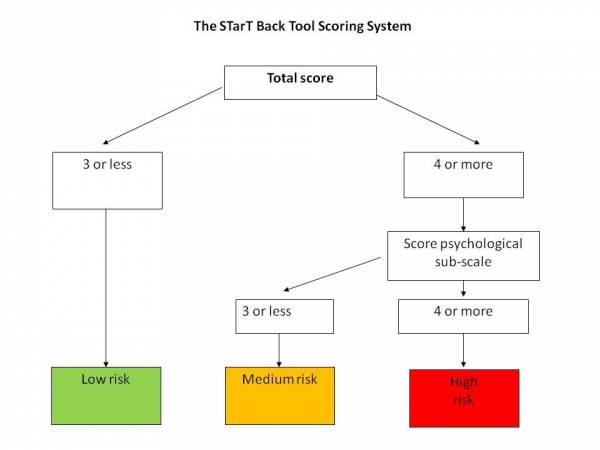Everyone suffers from lower back pain to a certain extent. You may feel a bit stiff and sore when you stand up after a long day sitting, or it may kick in after a few heavy sets of deadlifts. There are many suffering from chronic lower back pain, which can limit mobility and lead to impaired movement and disability.
Thankfully, most episodes of lower back pain clear up within a few weeks or months. However, for those with ongoing back pain, the personal and financial strain can be overwhelming. The ability to predict the outcome of lower back pain could spell the difference between long-term suffering and short-term limitations.
A paper published on BioMed Central examined the different methods used for screening lower back pain patients. The various methods were analyzed to determine their effectiveness in predicting the outcomes of the back pain.
STarT Back Tool (SBT) – The SBT has an accuracy of diagnosis around 74%, meaning it is usually able to distinguish between short-term pain that patients will recover from and pain that will become disabling. However, it only has a 59% chance of predicting pain outcomes. It’s more effective for diagnosing the risk of disability, but not at predicting the development of chronic/persistent pain.

(Source: BioMed)
Orebro Musculoskeletal Pain Screening Questionnaire (OMPSQ) – The OMPSQ had a 75% success rate at predicting disability outcomes, making it as effective as the SBT. However, it proved more effective at differentiating pain outcomes, with a 69% success rate that was significantly higher than SBT. The OMPSQ was highly accurate (83%) at predicting absenteeism rates (the likelihood the pain would cause patients to miss work) for the following six months.
Other tools were analyzed to determine their success rates, and it was discovered that using them alongside either the SBT or OMPSQ led to a better diagnosis. However, the ability of the tools to differentiate pain outcomes proved equally inefficient.
What this means is that doctors have a way of testing whether or not the pain will become disabling and predicting the results with a fair amount of accuracy. However, the tools used to measure the risk of developing persistent/chronic but not disabling pain are far less effective. Even the tool with the highest success rate still failed far more often than experts would like. Until tools with a higher success rate are developed, the results of the screening methods mentioned above should be accepted with caution, not as a definitive statement of fact.
Reference:
1. Emma Karran, “Persistent Low Back Pain: Can Screening Predict Risk?” On Medicine. N.p., 19 Jan. 2017. Web. 01 Mar. 2017.






